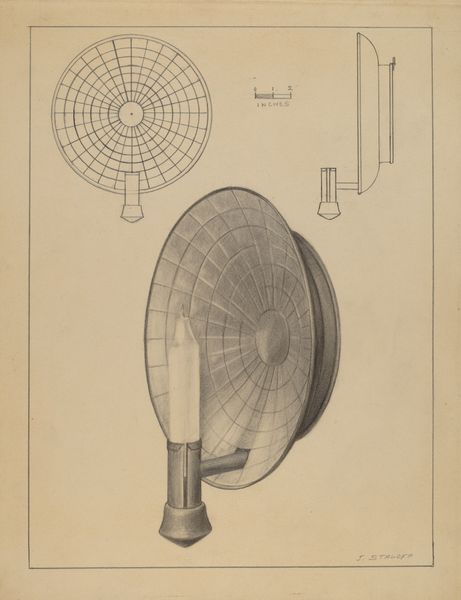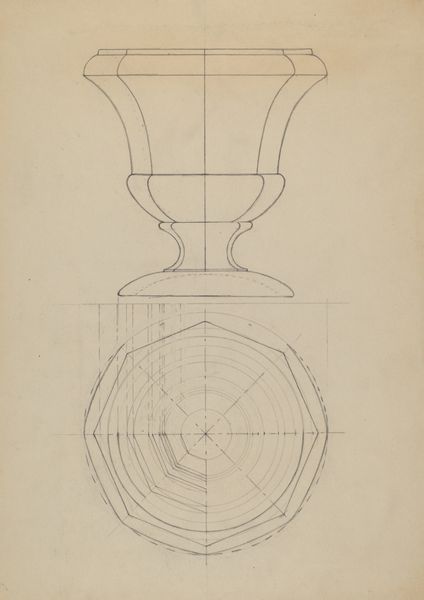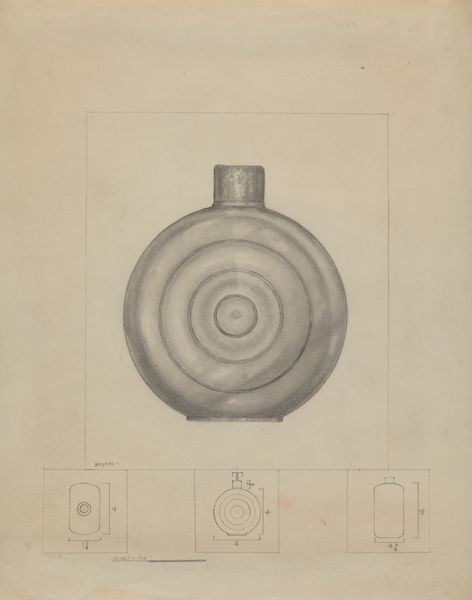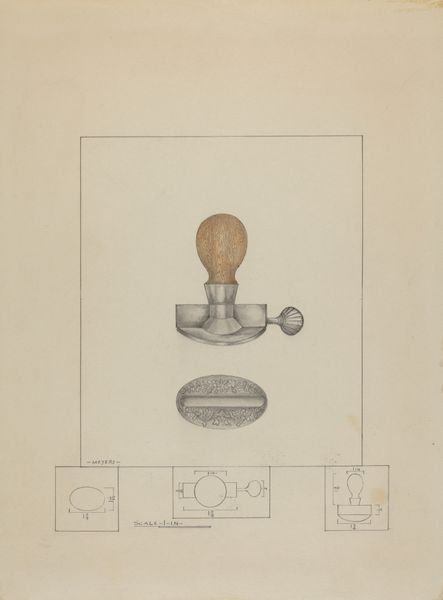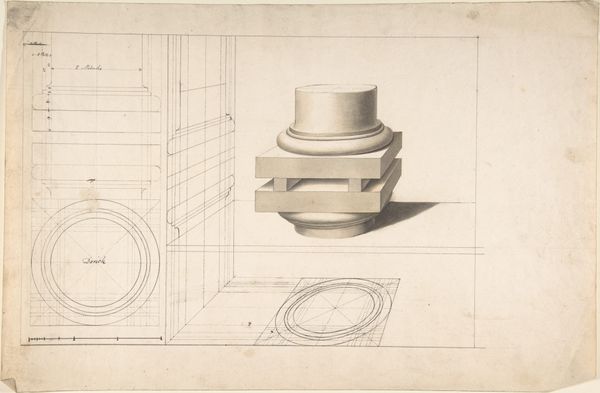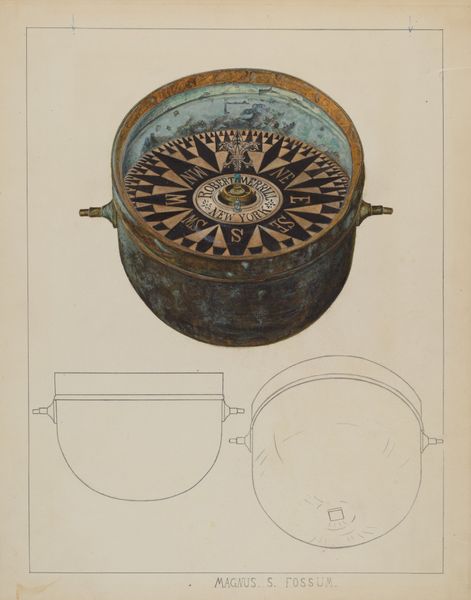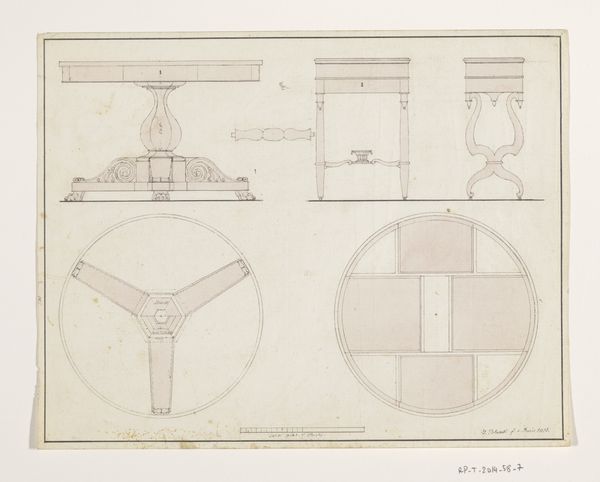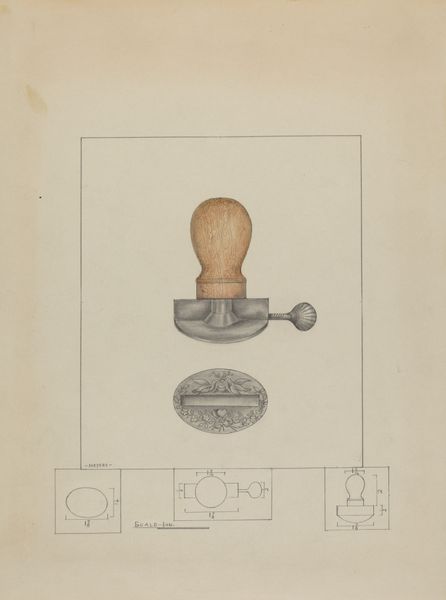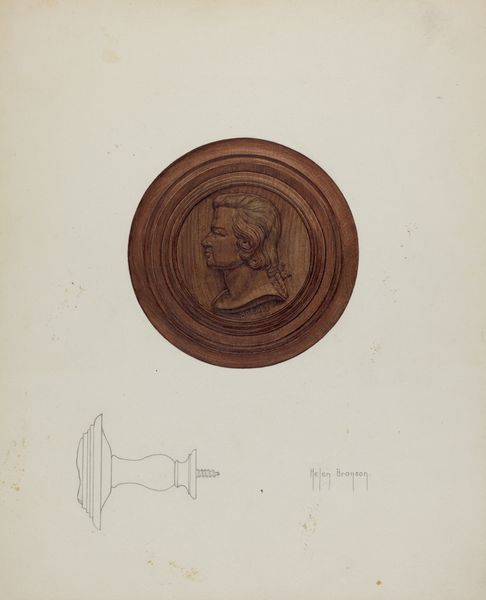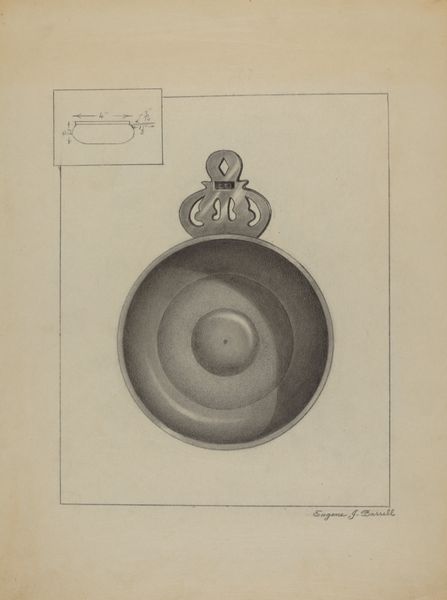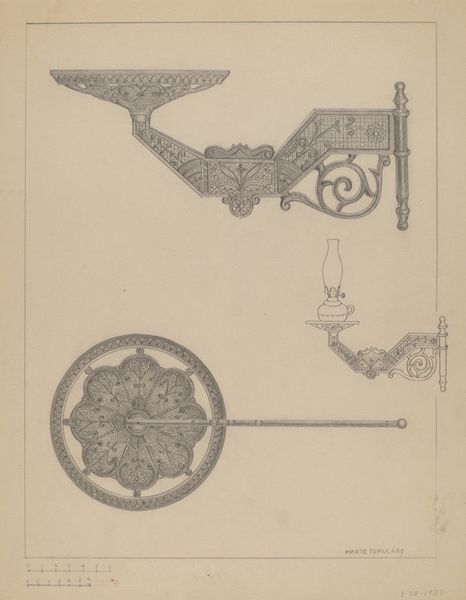
drawing, paper, pencil
#
drawing
#
amateur sketch
#
aged paper
#
toned paper
#
light pencil work
#
pencil sketch
#
sketched
#
light coloured
#
incomplete sketchy
#
paper
#
personal sketchbook
#
geometric
#
pencil
#
shading experimentation
Dimensions: overall: 30.6 x 22.9 cm (12 1/16 x 9 in.)
Copyright: National Gallery of Art: CC0 1.0
Editor: This is Henry Meyers' "Sun Dial," created around 1936. It's a pencil drawing on paper. The meticulous lines and Roman numerals give it a scientific yet antiquated feel. What strikes you about it? Curator: I see echoes of ancient knowledge. Sundials aren't merely time-telling devices; they're potent symbols of cosmic order. Consider the circle—an emblem of eternity—intersected by the gnomon, the pointer that casts the shadow. It visually unites the earthly and the celestial, doesn't it? Editor: It does, especially with the additional technical drawings at the bottom. What do they signify? Curator: Those additions are crucial. They shift the focus from mere representation to design, highlighting precision. Sundials marked sacred spaces – they are representations of our human attempts to structure, understand, and contain something as boundless as Time. Look at how light defines our days, dictating the rhythms of labor and leisure, just like the church bells would’ve told folks how to divide the day. What is being memorialized in representing them? Editor: So, the image isn’t just a picture of a sundial, but a meditation on the relationship between humanity and time itself. Do you think the somewhat faded quality of the paper contributes? Curator: Absolutely! The aged paper deepens that connection to the past. This image evokes layers of cultural memory – think of ancient obelisks aligning with the sun, and temples oriented towards solstices. It makes me wonder what was gained and lost during industrialization and digitization. Editor: This piece is richer than I first thought. It reminds us of our ancestors’ engagement with the cosmos. Curator: Indeed, an era when time was dictated by the sun's movement and a shadow's cast, inviting quiet contemplation and deep-seated meaning.
Comments
No comments
Be the first to comment and join the conversation on the ultimate creative platform.
